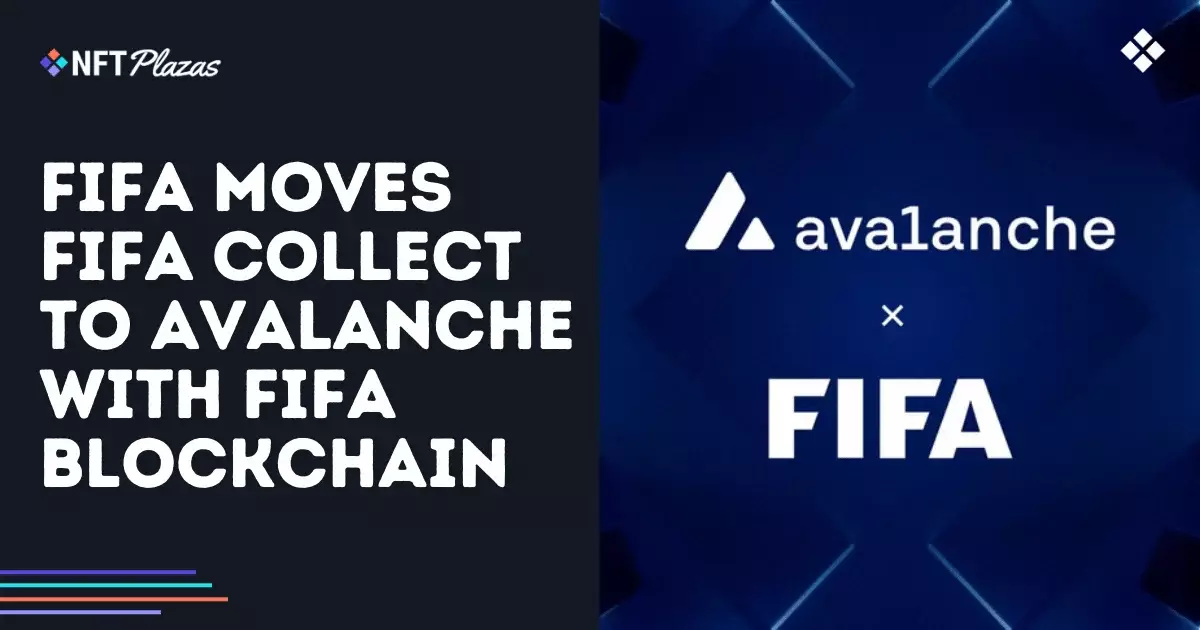FIFA is venturing into the digital frontier by developing an exclusive Layer-1 blockchain in collaboration with Avalanche, signaling a transformative shift for its collectibles platform, FIFA Collect. This bold initiative is not just another tech trend; it’s a clear statement of FIFA’s intent to redefine how digital collectibles are perceived and utilized globally. By introducing its dedicated blockchain, FIFA aims to streamline the user experience for its vast fanbase, which exceeds 5 billion admirers worldwide.
The Shift from Algorand to a Custom Solution
With the transition from the Algorand blockchain, users are faced with the inevitable migration to new Ethereum-compatible wallets like MetaMask. This is more than a technical tweak; it reflects a strategic pivot designed to enhance accessibility and performance. It’s crucial, however, to acknowledge the inconvenience posed to users who must abandon their current wallets. While technological advancements are always welcome, forcing a transition can alienate existing users who may find these changes cumbersome and, frankly, frustrating.
FIFA’s choice to abandon Algorand suggests dissatisfaction with its prior blockchain solution, raising questions about the long-term reliability of various blockchain platforms. While Algorand offered a certain level of promise, FIFA’s recent shift might signal deeper issues within the network’s capabilities or its fit for large-scale operations.
Leveraging Avalanche’s Strengths
Avalanche’s infrastructure promises enhanced transaction speeds and reduced costs while maintaining robust compatibility with Ethereum. This choice appears to be justified, as FIFA carefully analyzed performance, security, transaction fees, and customizability. Yet, as with any major partnership, the actual execution will determine the success of this endeavor. Will Avalanche live up to expectations, or will FIFA find itself navigating occasional stumbles as it adapts to this new environment?
Moreover, the decision to enhance digital collectibles aligns perfectly with global sports consumption trends, particularly during high-traffic periods such as international tournaments. Here, FIFA’s foresight is commendable; they are creating a platform that caters to a specific user demand. However, it’s essential to question how FIFA will manage this expansion and if they truly have the infrastructure and support ready to accommodate an influx of users and simultaneous marketplace activities.
Looking Forward: A Cautious Optimism
While FIFA’s push into dedicated blockchain technology seems promising, it’s essential to remain cautiously optimistic. The potential for improving user experience is apparent, but the transition’s challenges must be acknowledged. As the digital collectibles market matures, vigilance will be necessary to ensure that technology keeps pace with user expectations and market demands. FIFA’s ability to adapt and evolve will determine whether this venture becomes the transformation it aspires to be or merely a fleeting moment in the sprawling landscape of sports collectibles.
Investors and collectors alike should prepare for the unpredictability that often accompanies such significant technological shifts. The quest for an ideal platform in this innovative space is ongoing, and how FIFA navigates this journey will be closely watched by industry insiders and fans alike.

